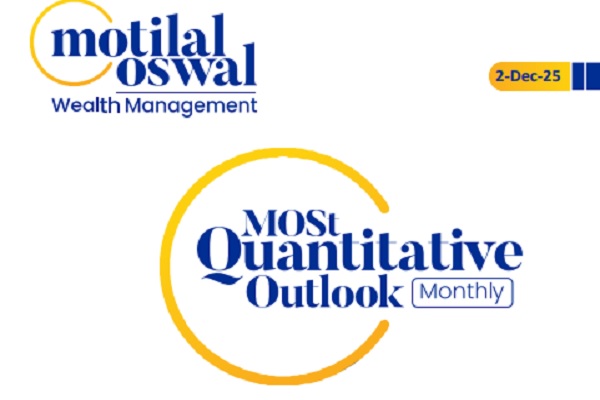Monthly Fixed Income View- July 23 by Pankaj Pathak, Fund Manager- Fixed Income

Below The Monthly Fixed Income View- July 23 by Pankaj Pathak, Fund Manager- Fixed Income
Markets in wariness
The domestic bond market in June showed a divergent view from that in the month of May. The market turned increasingly cautious and gave up the hope of rate cut anytime soon. Global factors too turned against the bond market as resilient economy and strong labour market data compelled the US Fed to turn hawkish. Most of the month witnessed gradual upward movement in the yields with the 10-year government bond yield grinding higher from 6.99% on 31 st May 2023 to 7.11% on 28 th June 2023. Short term money market rates remained relatively flat with 2-3 months treasury bills trading in a tight range between 6.70% - 6.76% for most part of the month. The yield on the AAA rated 3 months- PSU commercial papers (CPs) too remained in a tight band trading between 6.90%-6.95%. There was an upward shift in the yield curve during the month, where yields in the 3-5- year segment and even the ultra-long-term segment of 30-years saw hardening of ~17- 20bps. The yield curve also steepened slightly during the month from a relatively flattish curve back in May, on account of increased liquidity and the longer end of the yield curve enduring the impact of hawkish turn in the US monetary policy. The shift in views from ‘optimism’ in May to ‘caution’ in June was in response to a mixed bag of positive and negative cues, both domestic and global.
RBI delivering another pause but with caution:
The RBI continued its pause on rate hikes in the June policy, expressing its intentions to assess the cumulative impact of the 250bps rate hike so far. However, “Monetary policy needs to remain in ‘brace’ mode” said Dr. Patra and the minutes too reiterated the MPC's focus on lowering inflation to the4% target over the medium term. Given the CPI inflation is forecasted to remain significantly above the 4% goal for entire FY24, there is no room for the RBI to reverse the monetary policy direction anytime soon.
Liquidity continues to be in large surplus:
The banking system liquidity as measured by net borrowing/lending under the RBI’s liquidity adjustment facility, moved from ~? 0.42 trillion on 28 th April 2023 to around ? 1.25 trillion on 30 th June 2023. The main contributors to this increase in liquidity surplus were - (1) government bond maturities to the tune of ? 1 trillion, (2) RBI’s buying of foreign exchange, and (3) deposits of ? 2000 denomination currency notes after the RBI announced its withdrawal from circulation. The total value of ?2000 banknotes received back from circulation since the announcement on May 19, 2023, is ?2.72 trillion as of 30 th June 2023. This indicates that ~76% of the ?2000 banknotes in circulation as on 19 th May 2023, have since been returned of which about 87% is in the form of deposits and the remaining around 13% has been exchanged into other denomination banknotes. The RBI did acknowledge that deposit of ? 2000 denomination currency notes will add to the already high liquidity surplus in the banking system. However, they chose not to deploy any durable liquidity absorption tool to reduce the excess liquidity. Instead, resorted to conducting variable rate reverse repo (VRRR) auctions of various tenors to absorb the excess liquidity temporarily. In our opinion, overall liquidity condition will remain easy at least for the next three months. we would expect liquidity surplus to drain out during the second half of the fiscal year as cash withdrawals tend to pick up during the high activity festive season and elections. Until then, there could be some decline in short term money market rates.
Global hawkishness:
The outcome of the June Fed policy was a consensus pause but FED policy members released FED dot plot (FOMC members’ future expectation of Fed fund rate) which increased the dot plots for 2 further rate hikes. The not so weak macro-economic data and sticky inflation may lead the Fed to be hawkish and is likely to keep rates higher for longer which we believe may add more holes to the now weakening US economy. The hawkish Fed dot plots and mixed macro-economic data trends contributed to the volatility in domestic as well as global bond yields. The 2 year and 10 year US treasury yields have jumped to 4.95% and 3.95% respectively. As per the CME Fedwatch the probability of a rate hike in the July FOMC meeting has now increased to 89%. This should keep global rates elevated in near term. However, from more structural point of view, elevated interest rate for extended period is making the financial markets increasingly vulnerable to event risk like the one seen in March 2023 when regional banks in the US faced turbulence.
Inflation in comfort zone but has an upside risk:
The headline CPI inflation for May was at 4.25% YoY, mainly led by lower food inflation while core CPI (ex-food, fuel) remained sticky at 5.15% YoY. Most parts of India experienced a delayed onset of monsoon, thereby affecting the sowing pattern during the period. However, the CPI is likely to remain sub 5% for Q1FY24 and average around 5% in full year. While favorable base effects will remain in play for another few months, it continues to have an upside risk from monsoon-related uncertainties.
Outlook:
Given a volatile global economic scenario and lingering risks to domestic inflation, the near-term outlook is slightly clouded and highly data dependent. The market is now sensitive to cues for direction with a slightly stronger indication of an upward movement. Also, given the yields have been gradually moving upward amid uncertainties around rainfall, global hawkishness, and looming clouds of recession in the US, there is a high possibility of yields moving higher from current levels in near term. However, the upside on yields should be limited to 10-20 basis points given the overall domestic macro backdrop is favorable. In line with our near-term cautious view, we maintain a slightly lower portfolio duration in our actively managed bond fund as a tactical position. We would look to add duration on every uptick in bond yields. Notwithstanding the near-term concerns, we maintain our constructive outlook for long bonds in medium term. With bond yields hovering above 7.10%, much of the government bond yield curve is offering a reasonable positive real yield. Investors with over 2-3 years investment horizon should allocate to dynamic bond funds which tends to benefit in this kind of interest rate environment. Investors with shorter investment horizon and low risk appetite should stick with liquid funds.
To Read Complete Report & Disclaimer Click Here
Above views are of the author and not of the website kindly read disclaimer



















